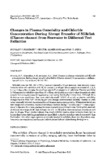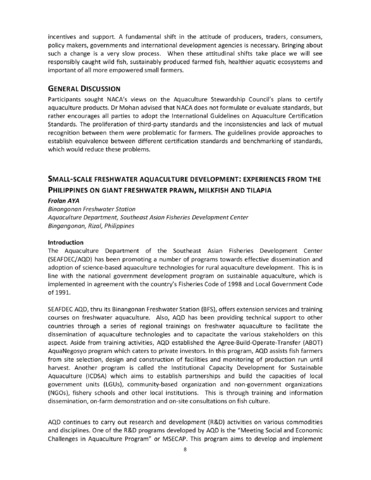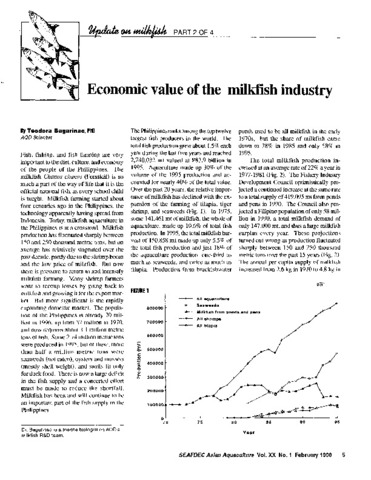Changes in plasma osmolality and chloride concentration during abrupt transfer of milkfish (Chanos chanos) from seawater to different test salinities
Share
Abstract
Milkfish juveniles (40, 120 or 260 g) were acclimated to 32 ppt seawater, then abruptly transferred to water with salinities of 0, 16, 32 (control) or 48 ppt. Blood samples were taken 0, 1, 2, 3, 5, 7 or 14 days after transfer. Survival rate was 95% or greater in all salinities. Plasma osmolality in fish exposed to salinities other than 16 or 32 ppt deviated from control values immediately after transfer but were subsequently regulated to near normal levels after several days. Although these deviations were significant, they were relatively small (≤20% of initial) as plasma osmolality changed by less than 0.07 mOsm/kg per unit change environmental salinity. Plasma chloride values generally followed the same pattern of changes as plasma osmolality. When these deviations were integrated across time, summed deviations (mOsm·day kg−1 or mEq·day l−1) were proportional to the osmotic or ionic gradient but were inversely proportional to size. For 40-g fish, summed deviations were larger in 48 than in 0 ppt; for 120- or 260-g fish, these deviations were larger in 0 than in 48 ppt. These results indicate that small milkfish tend to adapt better to fresh than to hypersaline water while larger milkfish are more likely to find hypersaline water less stressful than freshwater. Like other organ systems previously studied in milkfish, these size-dependent adaptations in osmoregulatory mechanisms reflect natural habitat shifts during development.
Description
SEAFDEC Aquaculture Department Contribution No. 220.
Suggested Citation
Ferraris, R. P., Almendras, J. M., & Jazul, A. P. (1988). Changes in plasma osmolality and chloride concentration during abrupt transfer of milkfish (Chanos chanos) from seawater to different test salinities. Aquaculture , 70(1-2), 145-157. https://doi.org/10.1016/0044-8486(88)90013-0
Subject
Taxonomic term
Collections
- AQD Journal Articles [1248]
Related items
Showing items related by title, author, creator and subject.
-
Small-scale freshwater aquaculture development: Experiences from the Philippines on giant freshwater prawn, milkfish and tilapia
Aya, Frolan (Japan International Cooperation Agency, 2013-12)The Aquaculture Department of the Southeast Asian Fisheries Development Center (SEAFDEC/AQD) has been promoting a number of programs towards effective dissemination and adoption of science-based aquaculture technologies ... -
Economic value of the milkfish industry
Bagarinao, Teodora (Aquaculture Department, Southeast Asian Fisheries Development Center, 1998)A brief description is given of the milkfish (Chanos chanos) farming industry in the Philippines. Over the past 20 years, the relative importance of milkfish has declined with the expansion of tilapia, tiger shrimp and ... -
Milkfish ponds from mangroves
Bagarinao, Teodora (Aquaculture Department, Southeast Asian Fisheries Development Center, 1998)




